Paleo-Art: Dinosaurs Come to Life in Stunning Illustrations
Dinosaur Art

In his new "Dinosaur Art" book, paleo-artist and comics editor Steve White reveals the beauty, brawn and mystique of these giant beasts that walked the Earth millions of years ago. His fascination with both dinosaurs and dinosaur drawing began when he was a young boy: "I've drawn dinosaurs for as long as I could hold a pencil," White writes in the book, released in September 2012 by Titan Books. Here's a selection of the amazing drawings by the various artists who have used science and imagination to render dinosaurs as well as ancient mammals in new light.
Colorful Beasts
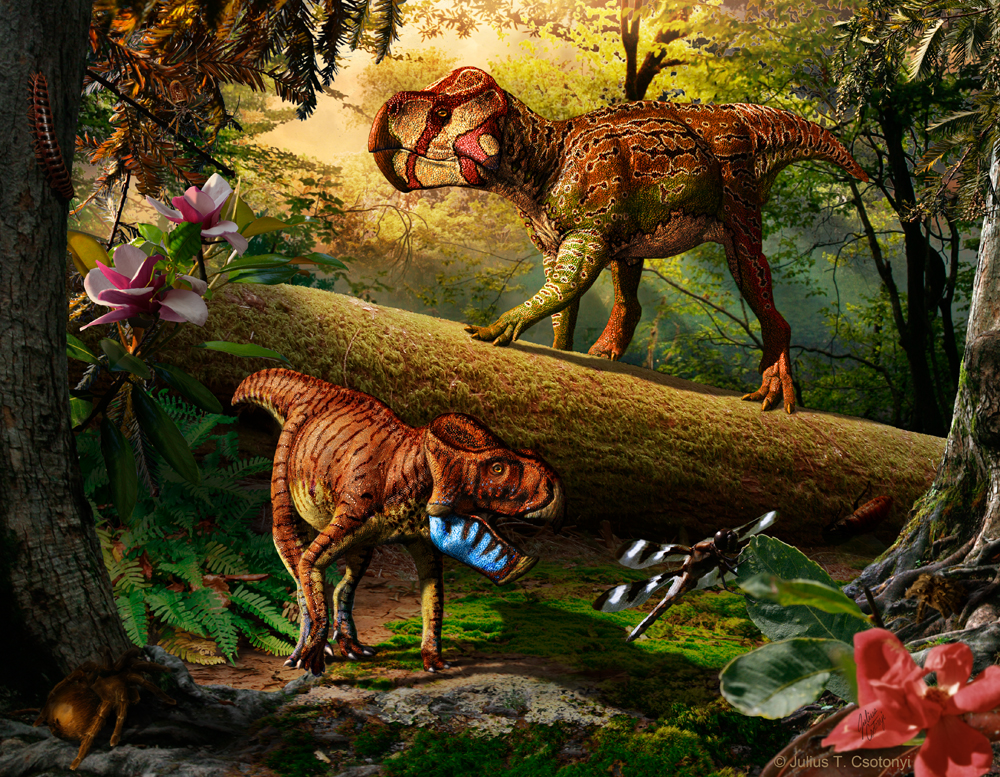
Unescoceratops koppelhusae (upper right) and Gryphoceratops morrisonii (lower left), new leptoceratopsid dinosaurs from Alberta, Canada. [See more artwork by Julius T. Csotonyi]
Campanian Montana Landscape
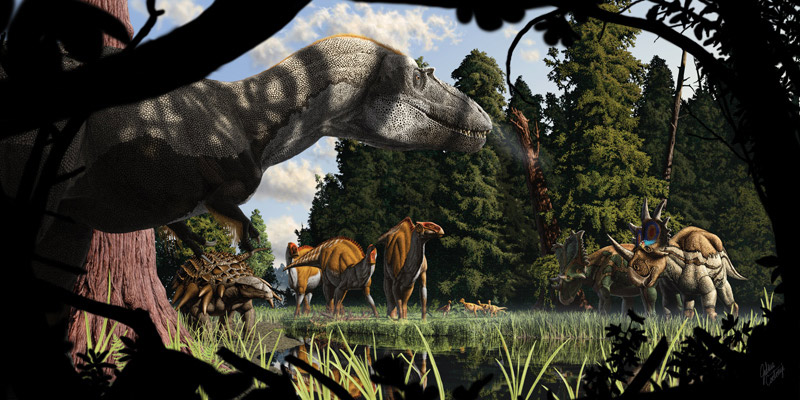
A Metasequoia forest in what is now Montana during the Late Cretaceous. Dinosaurs (from left to right): Gorgosaurus libratus, Edmontonia longiceps, Brachylophosaurus Canadensis, Stegoceras validum, Chasmosaurus belli, and Styracosaurus albertensis. Paleoartist and biologist Julius T. Csotonyi has always used bold colors in his illustrations, telling White in the book, "The color patterns that I assign to dinosaurs are often influenced by artistic composition, but I try to take care to make those decisions consistent with the roles that coloration plays in ecology, which is the study of the interaction of animals, plants, and microorganisms with each other and t heir environment." longiceps, Brachylophosaurus Canadensis, Stegoceras validum, Chasmosaurus belli, and Styracosaurus albertensis. Paleoartist and biologist Julius T. Csotonyi has always used bold colors in his illustrations, telling White in the book, "The color patterns that I assign to dinosaurs are often influenced by artistic composition, but I try to take care to make those decisions consistent with the roles that coloration plays in ecology, which is the study of the interaction of animals, plants, and microorganisms with each other and t heir environment."
Gliding Reptile

This Triassic gliding reptile (Icarosaurus siefkeri) evolved to sport extended ribs that support its gliding membrane, Csotonyi writes on his website; as such, I. siefkeri and "the living flying dragon (Draco volans) are an excellent example of convergent evolution, in which relatively unrelated organisms under similar selection pressures independently evolve similar characteristics," he writes.
Tiny Titanosaurs
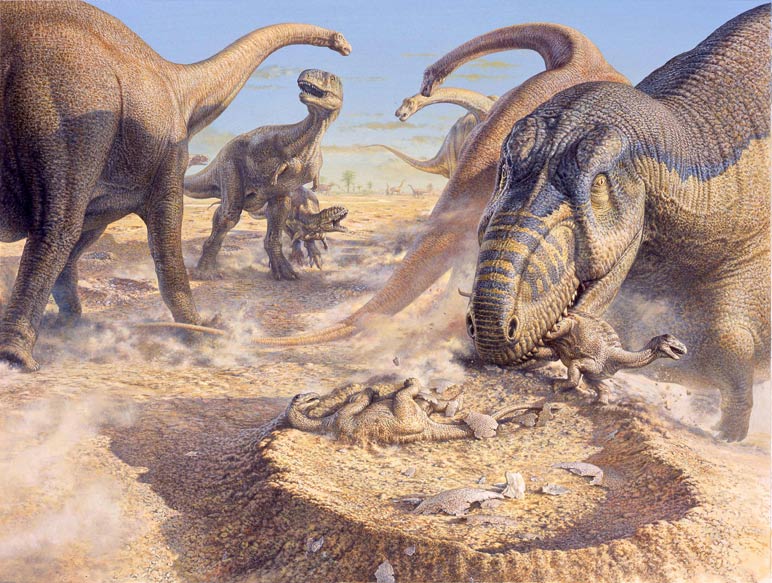
In this dramatic drawing, John Sibbick depicts a scene from the Late Cretaceous some 85 million years ago, in which Aucasaurus attacks a group of startled titanosaurs from their nests in Argentina, "pushing past the adults guarding nests, and snapping up the babies as they hatch," the caption reads.
Ammonite Graveyard
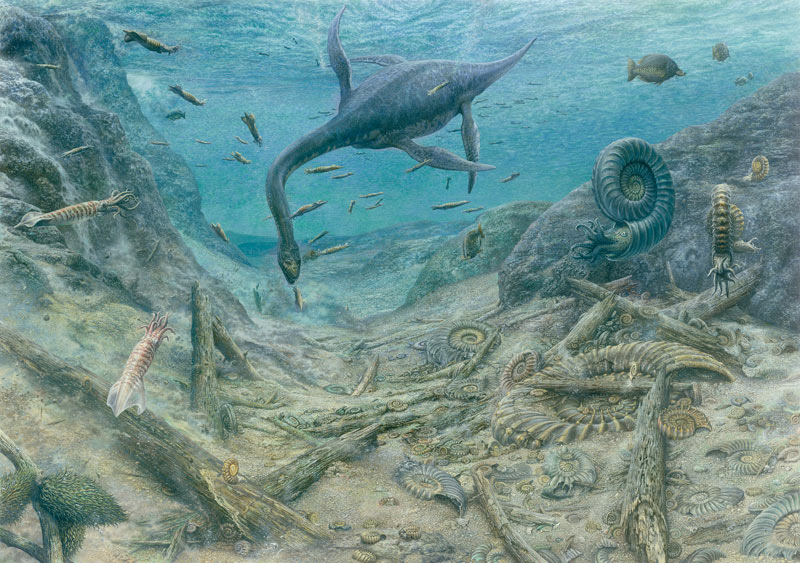
John Sibbick's detailed interpretation of a graveyard of extinct swimming mollusks called ammonites. An acclaimed artist, Sibbick has even been honored with a newfound pterosaur named after him, dubbed Ludodactylus sibbicki.
Double Death

Robert Nicholls captures dinosaur death in all its glory; working together, two Carcharodontosaurus saharicus steal away a juvenile Parilatitan stromeris from its family herd. Living during the Upper Cretaceous, the giant C. saharicus is often referred to as the African T. rex, rivaling the tyrant lizard in size.
Get the world’s most fascinating discoveries delivered straight to your inbox.
How Sweet
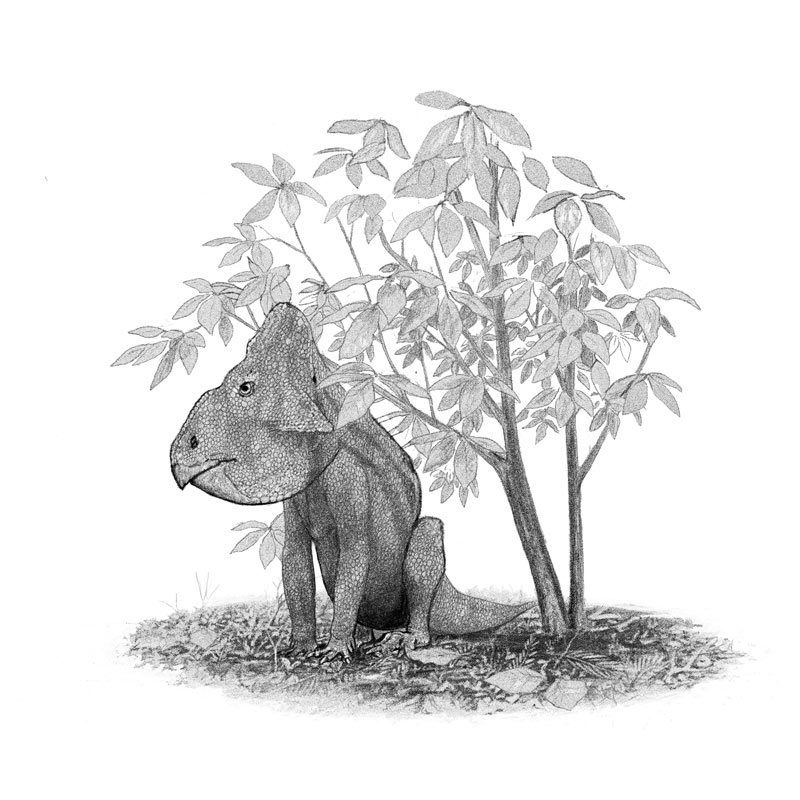
A Leptoceratops gracilis sits under a Magnolia tree; The Magnolia was amongst the first flowering plants to evolve, some 95 million years ago.
The Leviathon
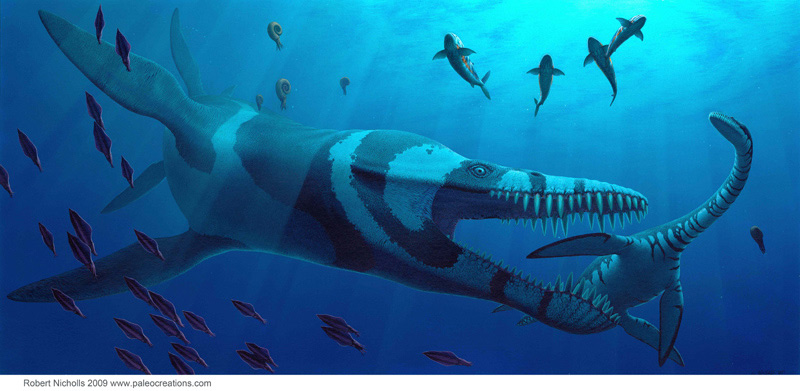
A 36-foot-long Pliosaurus attacks the plesiosaur Cryptoclidus, shown alongside the fish Pachycormus, a shoal of the belemnite Belemnoteuthis, and the ammonite (an extinct swimming mollusk) Pectinatites.
Jeanna Bryner is managing editor of Scientific American. Previously she was editor in chief of Live Science and, prior to that, an editor at Scholastic's Science World magazine. Bryner has an English degree from Salisbury University, a master's degree in biogeochemistry and environmental sciences from the University of Maryland and a graduate science journalism degree from New York University. She has worked as a biologist in Florida, where she monitored wetlands and did field surveys for endangered species, including the gorgeous Florida Scrub Jay. She also received an ocean sciences journalism fellowship from the Woods Hole Oceanographic Institution. She is a firm believer that science is for everyone and that just about everything can be viewed through the lens of science.
